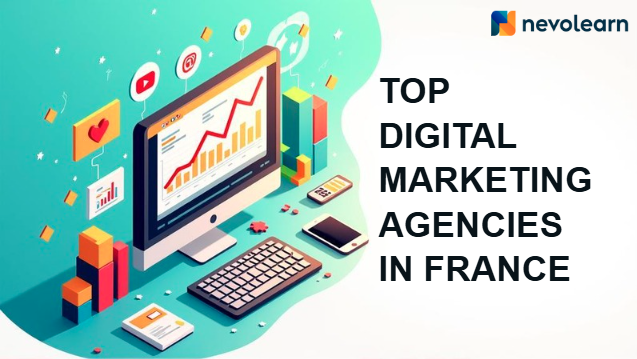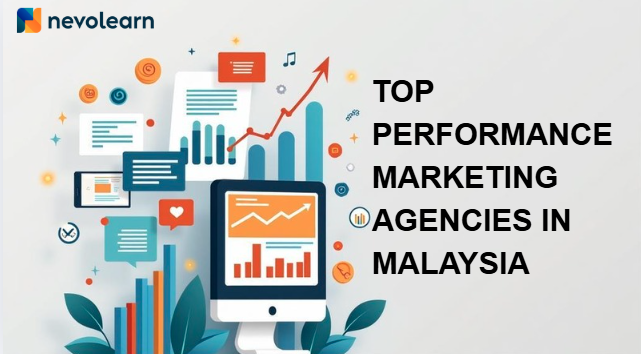
Up To 30% Off On All Courses*


 Top Salesforce Marketing Cloud Integrations in 2025
Top Salesforce Marketing Cloud Integrations in 2025Salesforce Marketing Cloud, also known as SFMC, is one of the most powerful digital marketing platforms available today. It offers analytics capabilities, customization, and advanced automation facilities. What truly makes SFMC a game-changer is its capability to integrate seamlessly with different systems and tools. In 2025, marketing technology is rapidly evolving. At this juncture, Salesforce Marketing Cloud integrations are becoming more important than ever for enabling unified customer experiences, driving return on investment, and streamlining operations.
This blog post will give insights into the top Salesforce Marketing Cloud Integrations in 2025. You can understand a lot more things from this blog post:
Why is Integration Important in 2025?
Nowadays, customers communicate with brands via different sources like websites, apps, SMS, emails, and even IoT devices. To meet customers at their places, marketers need a unified view, automated journeys, and real-time data of customer behavior. Thankfully, Salesforce Marketing Cloud can help here. Here are a few benefits of integrating tools with Salesforce Marketing Cloud:
- Quicker times to market for campaigns with smarter automation
- Better analytics and reporting across campaigns
- Automated workflows across service, marketing, and sales teams
- Real-time personalization with cross-platform data
- Unified customer profiles across different systems
With these benefits, integrations are not just nice in 2025; they are important to deliver a cohesive customer experience.
Salesforce Data Cloud
Formerly called Customer Data Platform, Salesforce Data Cloud integration is native. This integration will help you get a unified customer profile and segmentation.
Salesforce Data Cloud is one of the most powerful Salesforce Marketing Cloud integrations in 2025. It brings together real-time customer data from different systems, like service, mobile, and web, for the creation of unified profiles called Golden Records.
You can achieve the following things with this integration:
- Activate cross-channel campaigns with consistency in messaging
- Trigger customer journeys when a customer takes action anywhere from a service compliant to a website visit
- Based on the real-time behavior of customers, you can develop precise segments in SFMC.
The present trend in this integration is developing a tighter association between Marketing and Data Cloud to streamline omnichannel customization than ever before.
Slack for Marketing Collaboration
This integration is an example of a native plus AppExchange association. It helps organizations to achieve campaign approvals and team collaboration effectively.
Nowadays, marketing teams in some organizations are spread across different geographies. In this case, the integration of Slack with Salesforce Marketing Cloud has helped with quicker and efficient campaign collaborations. Here are the key benefits of this integration:
- Approvals for journeys and emails can be routed and approved via Slack Workflows
- Slack canvas lets you bring together campaign content, analytics, and briefs for reviewing them seamlessly.
- Marketers can get campaign performance alerts. Also, they can directly get task assignments and journey status updates on Slack.
This integration streamlines communication and brings down delays in campaign launch.
Snowflake
This SFMC API integration is helpful with data enrichment and advanced analytics.
Snowflake continues to be a favorite for marketers, who intend to run complex queries. Also, it is suitable for marketers intending to enrich SFMC Data with third-party sources. With this integration, the following benefits can be achieved by marketers:
- The direct connection of Snowflake to SFMC ensures easy data sync
- Marketers can use transactional and real-time behavioral data to improve segmentation.
- They can run machine learning-based presumptions of customer churn or next best action. Also, they can feed the data to SFMC again for quick action to prevent churn.
Marketing Cloud partner tools like Snowflake can bring a sturdy analytics edge to the execution of marketing campaigns.
Google Analytics 4 or GA4
This integration comes under the category of SFMC API integration plus web tagging. It helps with improved campaign attribution and tracking of web behavior. The Universal Analytics is losing the interest of marketers now, who are turning towards GA4 + SFMC integration. Many marketers these days feel that this integration is important. The reason is that it can bring the following advantages:
- To trigger messages, this integration can send instant messages on real-time events like discarding a shopping cart and product view.
- Track which email campaigns resulted in goal completions, bounce rates, and purchases.
- Marketers can sync user behavior from GA4 into SFMC for triggering journeys.
In 2025, SFMC API integrations with analytics platforms like GA4 can provide marketers with deeper knowledge of engagement and attribution rates.
WhatsApp Business and Meta Messenger
This integration falls under the category of native channel app integrations. It helps with customer service and conversational marketing.
WhatsApp has more than 2 billion users across the globe. So, it is turning out to be an important part of the Marketing Cloud Communication Stake. Here are the key benefits of this integration to marketers:
- Automated feedback surveys or customer support messages
- WhatsApp Business API integrated with SFMC can help marketers send personalized reminders, offers, and messages.
- Brands can use AI-powered chatbots connected to the SFMC journey builder. This helps them achieve real-time engagement.
It should be stated that conversational marketing is the present trend. Marketing Cloud’s native mass messaging channel’s expansion showcases this shift clearly.
Shopify and Commerce Cloud
The kind of integration is Native connector and Partner tools integration. It helps marketers with transactional messaging and e-commerce data.
As a marketer, you cannot deny the fact that e-commerce continues to boom. Due to this, tools like Salesforce Commerce Cloud and Shopify provide sturdy integration with SFMC.
- For dynamic content in emails, marketing teams can sync catalog data.
- The teams can trigger post-purchase journeys like cross-sell campaigns, review requests, and thank-you emails.
- They can pull purchase data, cart info, and product views into Marketing Cloud.
Marketing Cloud partner tools like Ampscript and DESelect segment help to customize the experience further.
Zapier
The integration is an example of a third-party connector. This integration can help connect thousands of applications to SFMC.
Marketers with restricted development resources can rely on Zapier as a popular bridge to get the following benefits:
- They can automate lead capture from forms straight into SFMC data extensions
- Trigger journeys based on events in external systems
- Connect SFMC with tools like HubSpot, Calendly, Google Sheets, and Eventbrite without coding.
Zapier demonstrates the democratization of marketing automation via easy SFMC API integrations.
Adobe Creative Cloud Plus Stensul
This integration is called partner tools integration. It helps with the creation of email content and the approval of workflows.
In 2025, marketers value collaboration and speed when developing content. Here, tools like Stensul, when integrated with Adobe Creative Cloud and SFMC, can streamline the process of email creation. Here are a few possible benefits:
- Markers can reduce errors and ensure brand consistency across teams.
- They can push final creatives straight into the content builder of SFMC
- Collaborate on emails with previews and live comments
This integration improves efficiency when making sure of high-quality output.
Microsoft Dynamics 365 and Outlook
The kind of integration that MS Dynamics 365 and Outlook come under is Partner App Plus API. This integration helps with aligning sales and marketing.
For B2B brands, aligning CRM data between Microsoft Dynamics and Salesforce Marketing Cloud is important. The integration brings the following benefits:
- To create customized nurture sequences based on deal stages
- To use behavioral triggers in SFMC for notifying sales representatives in Outlook.
- Sync lead and opportunity data between both platforms
Salesforce Integration trends in 2025 show an ongoing push for tighter alignment of sales and marketing even across ecosystems.
TikTok and Social Studio
This is an example of social platform integration. The purpose of this integration is engagement tracking and paid social campaigns.
TikTok continues to dominate short-form videos even though it is banned in some countries. Due to the growth of TikTok, marketers have integrated it with SFMC for better ad performance and insights. Here are the benefits marketers can expect from this integration:
- They can use ad clicks and video views as triggers for their SFMC journeys.
- Marketers can sync engagement data with customer profiles
- They can manage TikTok Campaigns through third-party connections and Social Studio.
This integration is an excellent example of expanding marketing cloud partner tools to meet the ever-changing media landscape.
Important Salesforce Integration Trends in 2025
When looking across the above-mentioned integrations, many big trends continue to emerge in 2025. Here are a few examples:
Unified Consent and Identity Management
Privacy regulations grow at a faster pace. With this growth, integration with tools for consent capturing, identity resolution, and preference centers is more important than ever.
Omnichannel Messaging Expansion
From Meta platforms to TikTok and from SMS to WhatsApp, the rise of multi-channel communication has driven integration with popular social and messaging tools.
AI-Driven Journey Orchestration
Einstein GPT and other AI tools now integrate with different sources of data. This enables predictive journeys and smarter content generation within SFMC.
No-Code and Low-Code Integration Tools
Nowadays, platforms like MuleSoft, Wokato, and Zapier are gaining popularity. So, developers with no coding knowledge can set up intricate SFMC integrations quickly.
Real-Time Personalization at Scale
Whether it is through Data Cloud, GA4, or Snowflake, marketers now depend on integrations to deliver personalized and real-time messaging.
Conclusion
In 2025, there is an ongoing redefinition of how brands keep in touch with customers. However, one thing remains clear. It is that Salesforce Marketing Cloud integrations are the foundation for data-driven personalized and scalable marketing.
Whether you use native connectors, third-party marketing cloud partner tools, or SFMC API integrations, it is important to build a connected and flexible marketing stack to succeed. To achieve this, take stock of your present setup and explore a few of the powerful integrations mentioned above.
Want to Level Up Your Skills?
EXPLORE BY CATEGORY
End Of List
No Blogs available Agile







